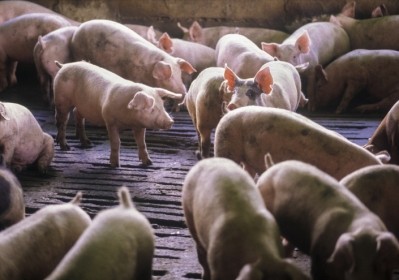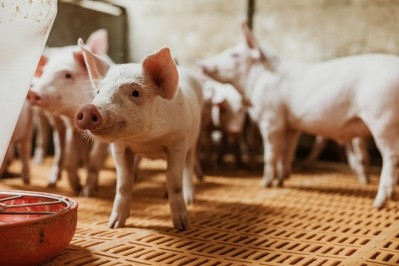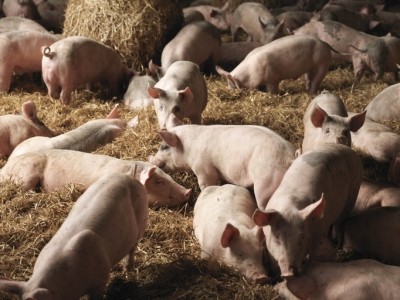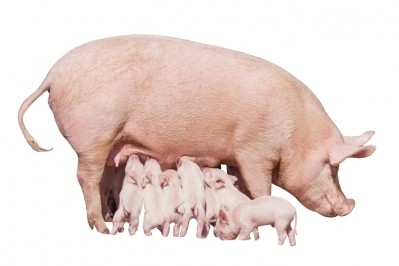Yeast fed to sows may benefit microbial transfer in offspring and piglet performance post-weaning

The improvement in piglet performance may be partially explained by changes in gut microbiota, said David Saornil, product manager, swine applications, Lallemand Animal Nutrition.
The latest research findings from the company on transgenerational effect of feeding yeast to sows was presented at the French swine research congress, Journées de la Recherche Porcine (JRP), which was organized by swine institute (IFIP) and the public research institute, INRAE.
Previous data had shown that the live yeast Saccharomyces cerevisiae boulardii CNCM I-1079 (Levucell SB) applied to sows enhances weanling piglets´ performance and influences sows´ gut microbiota - the microbial maternal imprinting concept, said Lallemand.
The objective of the new study was to confirm the effect of Levucell SB (SB) in the sow diet on piglet performance and gut microbiota after weaning.
In the current context of pharmacological ZnO removal and antibiotic use reduction in swine production, it is more important than ever to have the best possible start for the progeny, said the company.
A piglet that is strong at weaning will be healthier and perform better during the post-weaning stage, it added.
In that context, the Lallemand Animal Nutrition swine team has been looking at how sow management and nutrition have a signification influence on piglet development, including aspects like fetal programming or microbial and immune transfer.
The study
Saornil outlined the data presented at JRP. The study evaluated 35 primiparous sows. The researchers divided those into two experimental treatments according to body weight (BW) and backfat thickness.
The diets included a commercial diet as a control and the experimental diet, which consisted of the commercial diet plus SB. The diets were given to the sows from late gestation until the end of lactation.
At weaning at 21 days of age, 120 piglets from each group were allocated into 20 pens (six piglets per pen). Piglets were weighed on days 14 and 35 post-weaning, and feed intake was recorded for the entire period. Faecal samples were taken from 20 piglets per group at weaning and on days 6 and 20 post-weaning.
The researchers saw that piglets from the SB-fed sows were significantly heavier on day 14 and tended to be heavier on day 35 than piglets from the sows fed the commercial diet only. Furthermore, piglets from SB-fed sows grew faster from days 0-14 and overall, likely driven by a higher average daily feed intake, they reported.
The sow’s diet influenced the piglets´ microbiota at all sampling times, added the swine nutrition specialists.
Mode of action
Outlining the mode of action of Levucell SB in this respect, Saornil told us:
“We know that the microbial profile and the development of the immune system are related. The microbial colonization of the piglets, and the abundance of either positive or the opposite, damaging, pathogenic bacteria, are going to drive that development. The microbiota is playing a central role.
"We see how feeding the yeast has a direct impact on the microbial profile of the sow. It creates a microenvironment within the intestine of the sow. The yeast can scavenge oxygen, thereby creating more anaerobic conditions.
"That microenvironment then stimulates the development of several beneficial bacteria from Lactobacillus to bacteria that can ferment fiber. That better microbial profile, richer in beneficial bacteria, is helping the sow to extract more nutrients, especially energy, from the feed through fermentation in the hind gut.
“Some pathogenic bacteria need a certain amount of oxygen to proliferate, so with the yeast, we are taking out the oxygen and that leaves the damaging microbes without the conditions they need to flourish.
“Around farrowing, when the sow is experiencing a lot of challenges, there is a risk of dysbiosis, an ‘imbalance’ in the gut microbial community, so protecting the microbial profile of the sow, keeping it positive during this period is key, the starting point.”
In terms of how these benefits for the sow will be passed onto their offspring and will last long after weaning, it starts by the colonization of the piglets’ intestinal microbiota with beneficial bacteria, he explained.
“When the piglets are born, they have very few or no intestinal microbes. Their intestine is thus going to get colonized by the first microbes they encounter. The piglets will be exposed to the microbial community in the farrowing pen, the bacteria on the sow’s udder and in the fecal material, for example. If the sow has dysbiosis, is excreting faeces with the wrong microbial profile, the piglets’ intestine will initially be contaminated by those bacteria.”
What the team discovered in this trial was that the microbial profile of the piglets from the SB fed sows was different from that of the piglets in the control group.
The researchers also saw that the piglets from the SB-fed sow group performed better post weaning, with the piglets in both groups receiving the same post-weaning diets.
Immune transfer
Another hypothesis is that by feeding the probiotic to the sows, it results in immune transfer from the mother to the offspring at the beginning of their lives, said Saornil.
“We have robust data showing that we are improving the concentration of Immunoglobulin G (IgG) in the colostrum of the sows. IgG is a type of antibody that can pass from the colostrum into the bloodstream of the piglets.”
The window of opportunity for that passive immunity transfer is limited though as piglets’ capacity to absorb antibodies quickly declines after the first six hours of life.
Fernando Bravo de Laguna, R&D project lead, swine, at Lallemand, in additional research, has observed that the piglets from the SB fed sows react differently to challenges, post weaning, with the team seenig an effect on the inflammatory response of the piglets following a respiratory challenge. That work continues.















